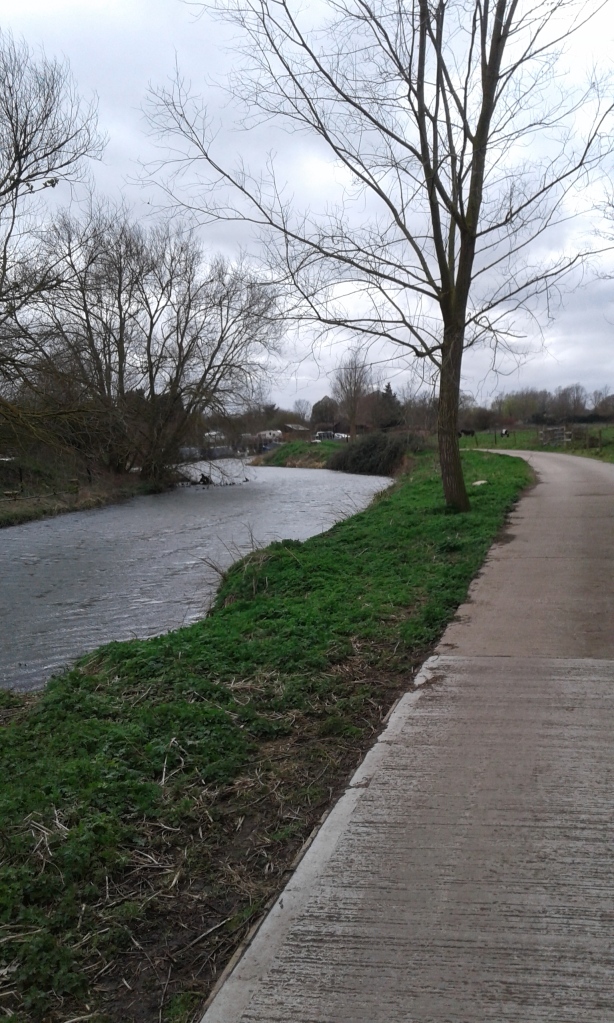Over the past week I have been entranced by a unique book. ‘The Peregrine’, by JA Baker.

One of the many good things to come from moving out of the city four and a half years ago has been a greater appreciation of wildlife, especially birds. Regular visitors to our garden include sparrows, gulls, pigeons, tits, magpies, robins, blackbirds and herons (hoping for meals from the fishpond). The calls of owls and the sound of woodpeckers also make themselves known in the vicinity. I am still learning to identify others, unlike my old Norwich mucker, Jonny Price, who has seen 464 different birds in Britain.
I have seen avocets, dunlins and godwits, when out with John Madden. Another old mate, Shaun Wilson, recommended ‘The Peregrine’. Shaun mentioned a section set in Danbury, some 12 miles south-east of our house. Reading through, it becomes clear that the whole book is set along and around the River Chelmer as its exits Chelmsford and winds its way out to the Blackwater Estuary and the North Sea.

It transpires that Baker spent 10 years in the 1950s and 1960s getting on his bike and obsessively tracking pairs of male and female peregrines out along this territory, from autumn to spring. Obsessively, and then more instinctively, so that the falcons gradually became accustomed to and tolerant of his presence, making for more acute observation.
The quality of writing is sublime. The hawk is “a skimming black crescent, cutting across the saltings”. A standout feature of the book is its descriptions of the ‘stoop’, the dive-bombing manoeuvre that the bird uses to kill prey. Baker talks of 100 mph stoop speeds, but modern technology has clocked peregrines stooping at double that speed.

Hunting is at the heart of it all. Killing is the climax of each day. “The dunlin seemed to come slowly back to the hawk. It passed into his dark outline and did not reappear,” writes the author. One peregrine can scatter hundreds, sometimes thousands of birds in a maelstrom of panic, as it plunges down onto its quarry.

On foot, Baker seeks out the eviscerated carcasses of the victims, portraying the scattered feathers, the still warm bodies and the smell. His array of descriptive techniques put me in mind of Cormac McCarthy (Blog 73). All the nuanced hues and mingling colours of the masses of birds, other wildlife, the rivers, estuary, sky, fields, trees and land are painted obliquely from his very own word palate. Baker talks of a wind that “brittled icily in the pleached lattice of the hedges”. Of dunlins that “rained away inland, like a horde of beetles gleamed with golden chitin.”
There is so much going on in the book. A disdain for humanity’s stinking degradation of the planet, and the author’s decision to live and operate quietly, furtively, on the very edge of this. And the slow poisoning of the birds from the DDT sprayed onto the Essex fields. This is the mournful part of the book, which I am just starting.
—
As I read, the setting was occasionally familiar, not precisely, but enough to make me strap on the walking boots at the weekend. Maureen dropped me off out at Little Baddow, on the Chelmer. A four mile walk back to Chelmsford along what was once a working canal, on which horse-drawn barges ferried timber and coal until the 1960s.

Not specified in the book, but my starting point, at Paper Mill Lock, would have been passed on Baker’s cycling routes.

I walked a solitary route back west, eyes open to the sky. The wind was a massive westerly, making my eyes water. I put on the earphones and listened to a podcast. Neil Kramer talking of immersion in the North American West Coast wilderness.

Plenty of gulls were sighted on the way, and the odd duck. Later, a heron was hunting in long grass 100 yards from the river. There were four bridges along the route.

And five locks.

Under one major road, poets had been at work, praising the female body.

This was Sandford Lock coming into view. Several hardy souls live on the river at this location.


Back in Chelmsford, the river splits two ways, into the Chelmer and Can, both heading north-west. Baker mentions the meeting of two rivers in the book, citing a nearby high chimney, now demolished, where peregrines sometimes roosted.

It was a great couple of hours out in nature. If any peregrines were hunting, they eluded my amateur eye. It hardly mattered. These kind of walks are food for my spirit.
Looks like an enjoyable place for a walk, and sounds like a good book.
LikeLike
Thanks Steve. I know so little about birds. Would peregrines ever be found in northern Canada?
LikeLike
Yes, peregrines are found here, but they are rare now. I have seen a few in our area over the years including once when 2 males were vying for the attention of a female. That was quite amazing to watch! There was no real fighting between the males just each one trying to impress the female.
LikeLike
More like peacocks than peregrines!
LikeLiked by 1 person
One of my favourite birds. Reading this I felt I was on the walk too.
LikeLiked by 1 person